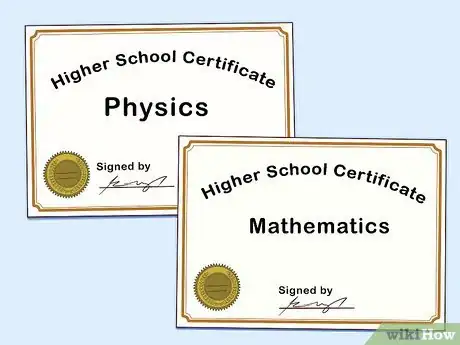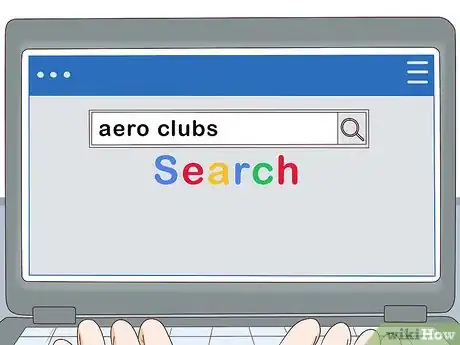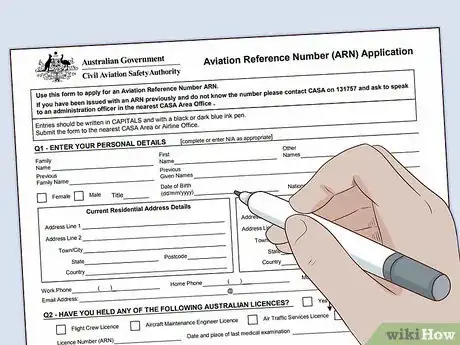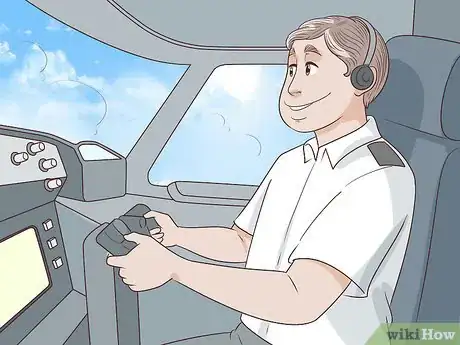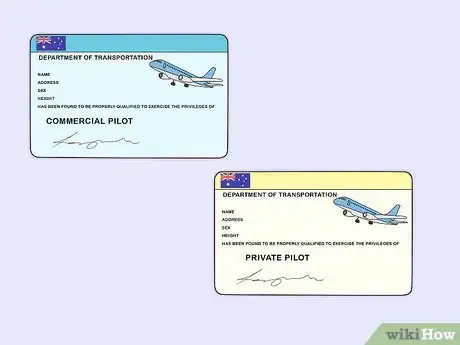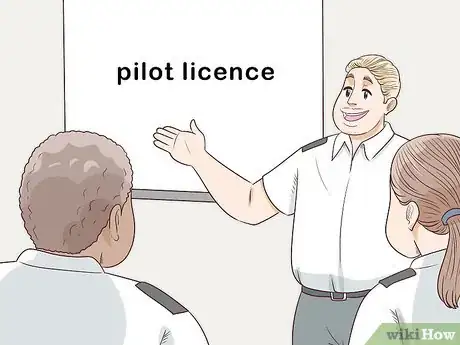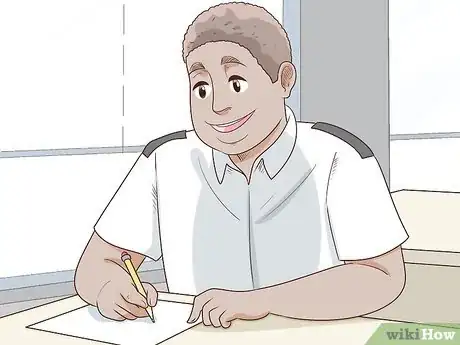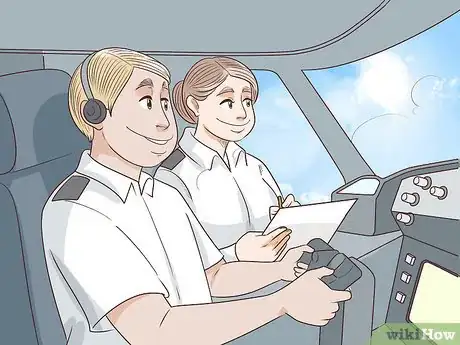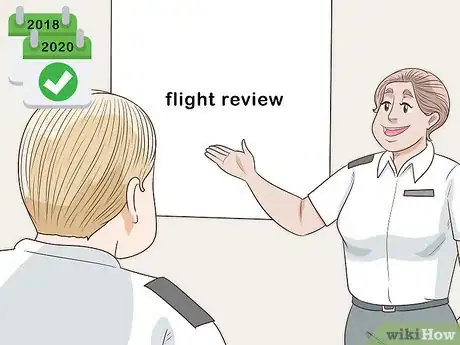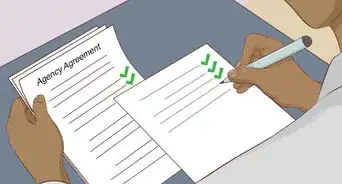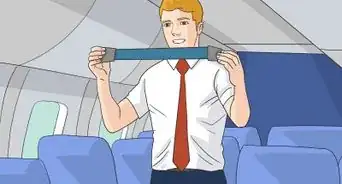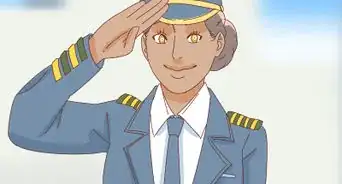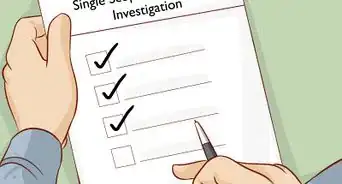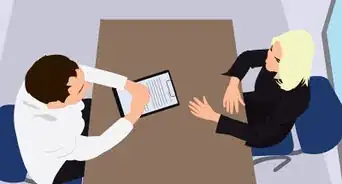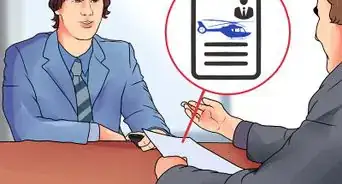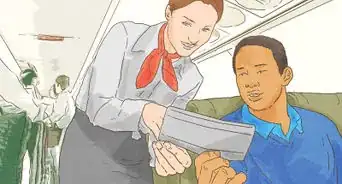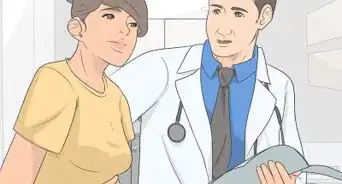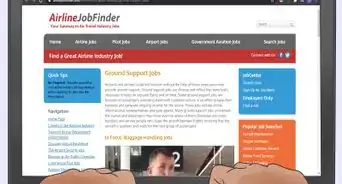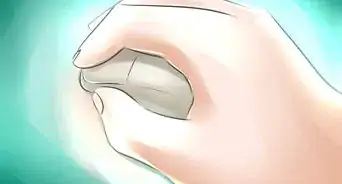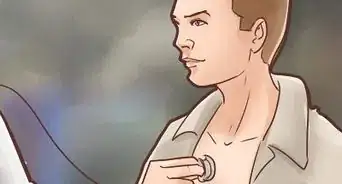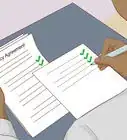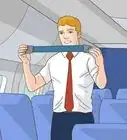This article was co-authored by Javier Diaz. Javier Diaz is an Entrepreneur & Stunt Helicopter Pilot, and owner of Wings Air Helicopters LLC. With over 20 years of flying experience, his company specializes in helicopter charters, tours, flight training, and aerial film production. He earned his BS from the United States Merchant Marine Academy and is a member of the Screen Actors Guild (SAG). As a Stunt Pilot, Javier has many major film credits, including several blockbuster films.
There are 9 references cited in this article, which can be found at the bottom of the page.
This article has been viewed 62,082 times.
Learning to fly is an exciting time, whether you are aiming to fly for pleasure or as a career. All regulations for flying in Australia are run through the Australian Government Civil Aviation Safety Authority, who help people to start flying and eventually become licensed as a pilot. Once you have enrolled with a flying organization, you will start to learn the basics of flying and get in flying hours with a qualified instructor. When you are ready, you can sit the theory and practical exams so that you can get a qualification as either a private or commercial pilot in Australia. We'll walk you through all the steps towards your future in aviation–from finding a flight school, to understanding the training hours you'll need, to obtaining your pilot's license.
Steps
Learning to Fly
-
1Gain your Higher School Certificate. Although there is no specified formal educational qualifications that you need before you can sit a pilot’s licence test in Australia, having a basic background in year 10 physics and maths will help you. There are also diplomas and degrees in aviation from Australian universities, which aren’t necessary to pass the licence tests but may be advantageous when an airline or chief pilot is reviewing your resume. No Australian airlines require a university degree but almost all essentially require a higher school certificate.[1]
- For a private pilot licence, a degree in aviation isn't required. If you ever want to fly for an airline outside of Australia (for example the United States) you should consider getting a university degree (which doesn't need to be aviation related).[2]
-
2Pick a flying organisation that is the right fit for you. There are numerous flying organisations located all around Australia, and you can find these using a search engine and the key words “flying schools” or “aero clubs”. Each school will have a primary focus, such as either private or commercial licencing, and will have different costs and fees associated with it.[3]
- Talk to as many flying instructors and students as you can to find out information about each particular flight organisation.
- Picking the right flight organisation depends on what your goal is. If you just want to fly for pleasure, then choose a school that is concentrated on recreational or private licencing. However if your aim is to have a career as a pilot, find a school that provides non-recreational commercial pilot training.
- You can always transfer schools at any stage if your goals change.
Advertisement -
3Complete your flight school training hours. As a rough average, it will take a student 55-60 hours of training to qualify for a private pilot licence, the minimum required being 40 hours. If you are training full time, this usually takes around 2 months. If you are training part-time, it will take around 12 months if you train for just over 1 hour per week.[4]
- The exact amount of time that you will spend training depends on many factors including how regularly you are flying, aircraft availability, your financial situation, and the weather. Your financial situation affects the length of time that your training can take because if you can afford to train full time, it will go much faster than if you have casual lessons.
-
4Obtain an aviation reference number (ARN) from the Australian Government. The Civil Aviation Safety Authority (CASA) is where you will get an ARN from. You will need to bring your proof of identity with you.[5]
- CASA is a governmental organisation who process and regulate all aspects of aviation in Australia.
- An ARN is free to get and will take up to 1 week to process.
- You don’t need an ARN when you are flying with an instructor, however you will need one before you fly solo.
-
5Get a CASA class 1 or 2 medical certificate to fly solo. While you aren’t required to have a medical certificate when flying with your instructor, you will need to get one before your first solo flight. You should make sure you can pass the medical before spending possibly thousands on lessons before finding out you are not eligible to solo or hold a licence due to a medical condition. The recreational aviation medical practitioners certificate (RAMPC) is the minimum medical requirement for flying solo.[6]
- The CASA class 1 medical certificate is valid for 1 year, and is required for commercial pilots and multi-crew licence pilots.
- The CASA class 2 medical certificate is valid for up to 4 years if you are aged under 40, and 2 years if you are older than 40. This is minimum requirement for private pilots, and is given by a Designated Aviation Medical Examiner (DAME).
- Use a search engine to find a DAME in your area.
- Getting a class 2 and 1 medical certificate includes a full medical history, an audiogram, and vision tests.
- A RAMPC can be used to fly solo in certain aircraft in certain conditions (more restrictive than a class 2) but has a much lower medical standard and is much cheaper to obtain. Keep in mind the RAMPC is only for pilots wishing to fly under the privileges of a recreational pilot licence (which is below a private pilot licence).
-
6Fly solo when your instructor deems that you are ready. Only instructors that are either grade 1 or 2 can allow students to embark on their first solo flight. You need to be at least 15, have an ARN, and have either a class 1 or 2 CASA medical certificate or a RAMPC. You will need to follow the conditions that your instructor sets, such as not having passengers and not flying for over 3 hours solo.[7]
- Before your first solo flight, you will need to have completed a dual flight in the same aircraft type within the last 30 days.
Getting a Private or a Commercial Licence
-
1Choose whether you are aiming for a private or commercial pilot licence. These two licences have different conditions and privileges associated with them. With a private pilot licence you can fly private aircraft only. A commercial pilot licence requires a private licence first, and then you can fly both private and commercial aircraft with an airline.
- Some flight schools are approved to deliver integrated training, which means you can skip the recreational pilot licence and private pilot licence and go straight to the commercial pilot licence.[8]
-
2Learn the theory for the private or commercial pilot licence. Your flight school will run classes that will teach you the theory component of getting a pilot licence. The subjects involved in the theory include aerodynamics, meteorology, navigation, and aircraft systems just to name a few.[9]
- Talk to your flight school about the best way to integrate your theory and practical work together in preparation for getting your private or commercial pilot licence.
-
3Complete the practical training for your licence type. For both licences, the flight training includes basic flying, cross-country, and instrumental flying. The private pilot licence training will take a minimum of 30 hours of flight time as the pilot, 10 hours of solo flight time, and 5 hours of cross-country time.[10]
- For an integrated course commercial pilot licence, you will need a minimum training of 140 hours of flight time as the pilot, 70 hours of pilot in command flight time, and 20 hours of pilot in command cross-country flight time.[11]
- For a non-integrated course the minimum training goes up to 200 hours flight time as pilot and 100 hours pilot in command flight time required.
-
4Pass the private or commercial pilot licence theory exam. The exam will cover the full syllabus that you learnt as the theory for the private pilot licence. Your exam will be organised through your flight school.[12]
- For the private pilot licence theory exam, the pass score for the exam is a minimum of 70%. The exam is 3.5 hours long, and all of the questions are either multi-choice or numerical value answers.[13]
- For the commercial pilot licence theory exam, you will be tested on 7 subjects, and you will need to get a minimum grade of 70% in each subject to pass, aside from the Flight Rules and Air Laws subject which requires 80%. You will need to sit all of the subject exams within a time period of 2 years, and each exam takes between 1.25-2.5 hours to sit. [14]
-
5Pass the private or commercial pilot licence flight test. You will be tested on all of the ground and flight aspects that you have been training for. The practical flight test will be organised through your flight school, and is run by CASA.[15]
- For both of the private and commercial pilot licence tests, these include numerous different aspects including take-off, descent, arrival, and post-flight.
-
6Complete a flight review every 1-2 years. A biannual flight review is mandatory and helps you to brush up on your flying skills that may deteriorate over time. This will ensure that you are still competent to operate the aircraft. This is done through your flight school.[16]
- All flight reviews make sure that you meet the standards set by the International Civil Aviation Organization.
Community Q&A
-
QuestionHow long does it take to get a commercial pilot license in Australia?
 Rain ECommunity AnswerNormally, training at just one lesson per week, it would take about 8-9 months to complete your Recreational Pilot License (RPL). It would then take about 3 more months of training to complete your full Private Pilot License (PPL).
Rain ECommunity AnswerNormally, training at just one lesson per week, it would take about 8-9 months to complete your Recreational Pilot License (RPL). It would then take about 3 more months of training to complete your full Private Pilot License (PPL). -
QuestionI'm in grade ten this year; what subjects should I choose in order to become an airline pilot? Do I absolutely have to go to uni in order to become one?
 Mzm555Top AnswererStudying physics, mathematics and science would be of great benefit, introducing you to some basic aeronautic principals, physics equations and mathematical concepts you will use while learning to fly. While attending university is not a must to become an airline pilot, it is highly recommended if you wish to become a commercial/international airline pilot. Without attending university, you can learn to fly from private organizations, or you may apply for a cadetship offered by various some airlines.
Mzm555Top AnswererStudying physics, mathematics and science would be of great benefit, introducing you to some basic aeronautic principals, physics equations and mathematical concepts you will use while learning to fly. While attending university is not a must to become an airline pilot, it is highly recommended if you wish to become a commercial/international airline pilot. Without attending university, you can learn to fly from private organizations, or you may apply for a cadetship offered by various some airlines. -
QuestionHow much does it cost from starting to the end to finally become a pilot?
 WikiaWangTop AnswererIt depends on how you define "pilot." Usually, to become a commercial pilot, it costs around $20K to $50K. As for an ATP, it usually cost more than $40K.
WikiaWangTop AnswererIt depends on how you define "pilot." Usually, to become a commercial pilot, it costs around $20K to $50K. As for an ATP, it usually cost more than $40K.
Warnings
- Always follow all of the conditions and restrictions that you licence type has.⧼thumbs_response⧽
References
- ↑ https://www.casa.gov.au/standard-page/learning-fly
- ↑ https://www.qantas.com/us/en/about-us/qantas-careers/pilots-flight-operations.html
- ↑ https://www.casa.gov.au/standard-page/learning-fly
- ↑ https://www.casa.gov.au/standard-page/learning-fly#where
- ↑ https://www.casa.gov.au/standard-page/learning-fly-student-pilots
- ↑ https://www.casa.gov.au/standard-page/learning-fly-student-pilots
- ↑ https://www.casa.gov.au/standard-page/learning-fly-student-pilots
- ↑ https://www.casa.gov.au/standard-page/getting-your-commercial-pilot-licence
- ↑ https://www.casa.gov.au/standard-page/getting-your-private-pilot-licence
- ↑ https://www.casa.gov.au/standard-page/getting-your-private-pilot-licence
- ↑ https://www.casa.gov.au/standard-page/getting-your-commercial-pilot-licence
- ↑ https://www.casa.gov.au/standard-page/getting-your-private-pilot-licence
- ↑ https://www.casa.gov.au/standard-page/ppl-private-pilot-licence
- ↑ https://www.casa.gov.au/standard-page/cpl-examination
- ↑ https://www.casa.gov.au/standard-page/getting-your-commercial-pilot-licence
- ↑ https://www.casa.gov.au/standard-page/flight-reviews
About This Article
If you want to become a pilot in Australia, you’ll need to go through the Australian Government Civil Aviation Safety Authority to learn how to fly and to become licensed. First, you'll need to learn how to fly from an organization that focuses on your interests, like private or commercial flying. After you finish this initial training, you'll need to get your aviation reference number and a medical certificate. Once you have all of your documents, complete the practical training for your license type. Finally, you'll need to pass the pilot license theory exam and the flight test to become a pilot. To learn how to complete a flight review, keep reading!
